EUR 415.000
2 slk
70 m²


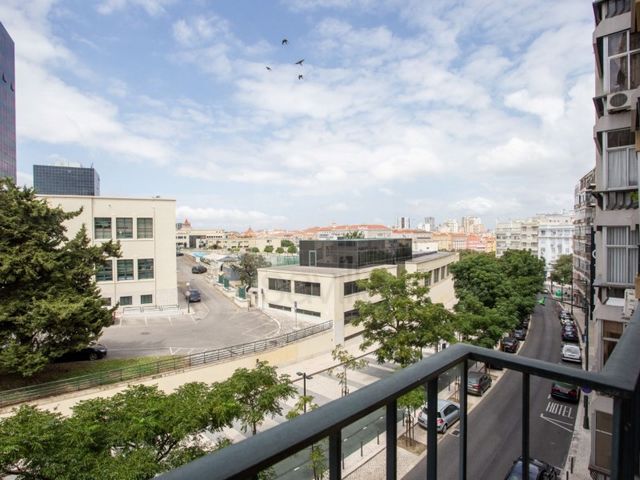

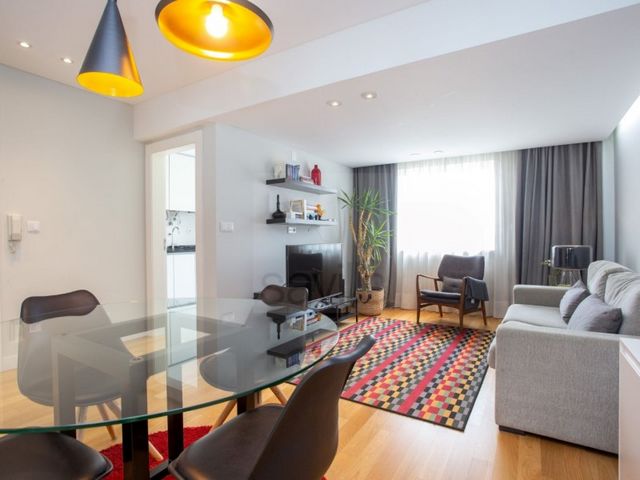

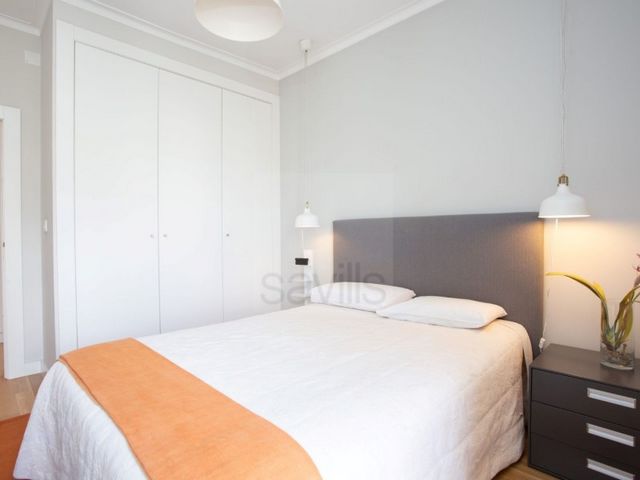



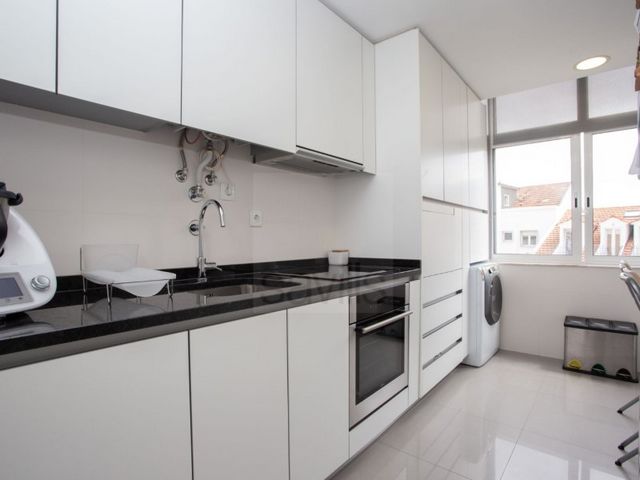
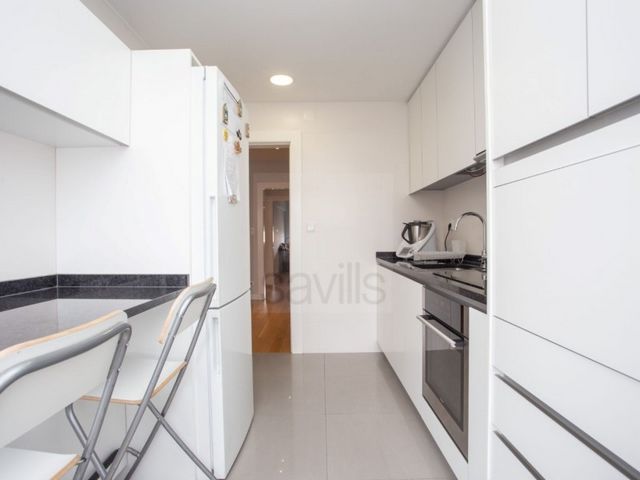


Energie Categorie: C
#ref:SAV15272 Meer bekijken Minder bekijken 2 bedroom apartment with 75 sqm, refurbished, next to the Instituto Superior Tecnico, in SaldanhaOne of Lisbon's most central areas, close to Largo do Saldanha, Estefânia, Avenida da República and Marquês de Pombal.This property with 75 sqm of gross private area, in a building with a lift and two apartments per floor, comprises a 30 sqm living room with a small balcony, large kitchen, two bedrooms (13sqm and 12 sqm), one bathrooms.Bright flat, completely renovated, in a building with a lift.In this area you can enjoy palaces and palaces (Palacete da Estefânia, Palácio Sotto Mayor), the Anjos Church, schools (Escola Secundária de Camões, formerly Liceu Camões and Universidade Autónoma de Lisboa), the Santo António dos Capuchos Hospital, the Império Cinema and the Neptuno Fountain in Largo de Dona Estefânia, as well as various restaurants and traditional shops.Thanks to its central location, it has a vast transport network (metro and Carris buses) that allow easy access to other areas of Lisbon, making this property an excellent investment for long-term rentals, as well as home ownership with comfortable living in the city centre.'Avenidas Novas' was the name used for the urban development that pushed the city of Lisbon northwards at the end of the 19th century and the first half of the 20th century. New neighbourhoods sprang up with single-family homes and income properties, occupied by by an expanding middle, upper-middle and upper class. The new neighbourhoods, with their wide streets, landscaped courtyards and homogeneous façade design, were initially built in the style of eclectic and vaguely Art Nouveau architecture, with architects such as Miguel Ventura Terra, Manuel Joaquim Norte Júnior, Miguel Nogueira Júnior, Ernesto Korrodi, Álvaro Augusto Machado, Pardal Monteiro, António Couto de Abreu, Arnaldo Redondo Adães Bermudes, Adolfo António Marques da Silva and Edmundo Tavares. In addition to some of the aforementioned names, during the brief and ephemeral period of Portuguese modernism, Luís Cristino da Silva, Jorge Segurado, Cassiano Branco, João Simões (architect), Jacinto Bettencourt and Tertuliano Lacerda Marques stand out. Later, with the urbanisation policies of the Estado Novo, expansion continued within the so-called 'Soft Portuguese Style'.
Energiekategorie: C
#ref:SAV15272 Categoría Energética: C
#ref:SAV15272 2 bedroom apartment with 75 sqm, refurbished, next to the Instituto Superior Tecnico, in SaldanhaOne of Lisbon's most central areas, close to Largo do Saldanha, Estefânia, Avenida da República and Marquês de Pombal.This property with 75 sqm of gross private area, in a building with a lift and two apartments per floor, comprises a 30 sqm living room with a small balcony, large kitchen, two bedrooms (13sqm and 12 sqm), two bathrooms.Bright flat, completely renovated, in a building with a lift.In this area you can enjoy palaces and palaces (Palacete da Estefânia, Palácio Sotto Mayor), the Anjos Church, schools (Escola Secundária de Camões, formerly Liceu Camões and Universidade Autónoma de Lisboa), the Santo António dos Capuchos Hospital, the Império Cinema and the Neptuno Fountain in Largo de Dona Estefânia, as well as various restaurants and traditional shops.Thanks to its central location, it has a vast transport network (metro and Carris buses) that allow easy access to other areas of Lisbon, making this property an excellent investment for long-term rentals, as well as home ownership with comfortable living in the city centre.'Avenidas Novas' was the name used for the urban development that pushed the city of Lisbon northwards at the end of the 19th century and the first half of the 20th century. New neighbourhoods sprang up with single-family homes and income properties, occupied by by an expanding middle, upper-middle and upper class. The new neighbourhoods, with their wide streets, landscaped courtyards and homogeneous façade design, were initially built in the style of eclectic and vaguely Art Nouveau architecture, with architects such as Miguel Ventura Terra, Manuel Joaquim Norte Júnior, Miguel Nogueira Júnior, Ernesto Korrodi, Álvaro Augusto Machado, Pardal Monteiro, António Couto de Abreu, Arnaldo Redondo Adães Bermudes, Adolfo António Marques da Silva and Edmundo Tavares. In addition to some of the aforementioned names, during the brief and ephemeral period of Portuguese modernism, Luís Cristino da Silva, Jorge Segurado, Cassiano Branco, João Simões (architect), Jacinto Bettencourt and Tertuliano Lacerda Marques stand out. Later, with the urbanisation policies of the Estado Novo, expansion continued within the so-called 'Soft Portuguese Style'.
Performance Énergétique: C
#ref:SAV15272 2 bedroom apartment with 75 sqm, refurbished, next to the Instituto Superior Tecnico, in SaldanhaOne of Lisbon's most central areas, close to Largo do Saldanha, Estefânia, Avenida da República and Marquês de Pombal.This property with 75 sqm of gross private area, in a building with a lift and two apartments per floor, comprises a 30 sqm living room with a small balcony, large kitchen, two bedrooms (13sqm and 12 sqm), one bathrooms.Bright flat, completely renovated, in a building with a lift.In this area you can enjoy palaces and palaces (Palacete da Estefânia, Palácio Sotto Mayor), the Anjos Church, schools (Escola Secundária de Camões, formerly Liceu Camões and Universidade Autónoma de Lisboa), the Santo António dos Capuchos Hospital, the Império Cinema and the Neptuno Fountain in Largo de Dona Estefânia, as well as various restaurants and traditional shops.Thanks to its central location, it has a vast transport network (metro and Carris buses) that allow easy access to other areas of Lisbon, making this property an excellent investment for long-term rentals, as well as home ownership with comfortable living in the city centre.'Avenidas Novas' was the name used for the urban development that pushed the city of Lisbon northwards at the end of the 19th century and the first half of the 20th century. New neighbourhoods sprang up with single-family homes and income properties, occupied by by an expanding middle, upper-middle and upper class. The new neighbourhoods, with their wide streets, landscaped courtyards and homogeneous façade design, were initially built in the style of eclectic and vaguely Art Nouveau architecture, with architects such as Miguel Ventura Terra, Manuel Joaquim Norte Júnior, Miguel Nogueira Júnior, Ernesto Korrodi, Álvaro Augusto Machado, Pardal Monteiro, António Couto de Abreu, Arnaldo Redondo Adães Bermudes, Adolfo António Marques da Silva and Edmundo Tavares. In addition to some of the aforementioned names, during the brief and ephemeral period of Portuguese modernism, Luís Cristino da Silva, Jorge Segurado, Cassiano Branco, João Simões (architect), Jacinto Bettencourt and Tertuliano Lacerda Marques stand out. Later, with the urbanisation policies of the Estado Novo, expansion continued within the so-called 'Soft Portuguese Style'.
Categoria energetica: C
#ref:SAV15272 2 bedroom apartment with 75 sqm, refurbished, next to the Instituto Superior Tecnico, in SaldanhaOne of Lisbon's most central areas, close to Largo do Saldanha, Estefânia, Avenida da República and Marquês de Pombal.This property with 75 sqm of gross private area, in a building with a lift and two apartments per floor, comprises a 30 sqm living room with a small balcony, large kitchen, two bedrooms (13sqm and 12 sqm), one bathrooms.Bright flat, completely renovated, in a building with a lift.In this area you can enjoy palaces and palaces (Palacete da Estefânia, Palácio Sotto Mayor), the Anjos Church, schools (Escola Secundária de Camões, formerly Liceu Camões and Universidade Autónoma de Lisboa), the Santo António dos Capuchos Hospital, the Império Cinema and the Neptuno Fountain in Largo de Dona Estefânia, as well as various restaurants and traditional shops.Thanks to its central location, it has a vast transport network (metro and Carris buses) that allow easy access to other areas of Lisbon, making this property an excellent investment for long-term rentals, as well as home ownership with comfortable living in the city centre.'Avenidas Novas' was the name used for the urban development that pushed the city of Lisbon northwards at the end of the 19th century and the first half of the 20th century. New neighbourhoods sprang up with single-family homes and income properties, occupied by by an expanding middle, upper-middle and upper class. The new neighbourhoods, with their wide streets, landscaped courtyards and homogeneous façade design, were initially built in the style of eclectic and vaguely Art Nouveau architecture, with architects such as Miguel Ventura Terra, Manuel Joaquim Norte Júnior, Miguel Nogueira Júnior, Ernesto Korrodi, Álvaro Augusto Machado, Pardal Monteiro, António Couto de Abreu, Arnaldo Redondo Adães Bermudes, Adolfo António Marques da Silva and Edmundo Tavares. In addition to some of the aforementioned names, during the brief and ephemeral period of Portuguese modernism, Luís Cristino da Silva, Jorge Segurado, Cassiano Branco, João Simões (architect), Jacinto Bettencourt and Tertuliano Lacerda Marques stand out. Later, with the urbanisation policies of the Estado Novo, expansion continued within the so-called 'Soft Portuguese Style'.
Energie Categorie: C
#ref:SAV15272 Apartamento T2 com 75 m2, reabilitado, junto ao Instituto Superior Tecnico, ao Saldanha.Uma das zonas mais centrais de Lisboa, próximo do Largo do Saldanha, Estefânia, Avenida da República e Marquês de Pombal.Este imóvel com 75 m2 de área bruta privativa, inserido num edifício com elevador e duas frações por piso, é composto por uma sala com 30 m2 com pequena varanda, cozinha ampla, dois quartos (13 m2 e 12 m2), e 1 casa de banho.Apartamento com boa luminosidade, todo reabilitado, num prédio com elevador.Nesta zona poderá desfrutar de palácios e palacetes (Palacete da Estefânia, Palácio Sotto Mayor) da Igreja dos Anjos, escolas (Escola Secundária de Camões, antigo Liceu Camões e Universidade Autónoma de Lisboa) do Hospital de Santo António dos Capuchos, do Cinema Império e do Chafariz Neptuno no Largo de Dona Estefânia, assim como usufruir de diversos restaurantes e comércio tradicional.Graças à sua centralidade, dispõe de uma vasta rede de transportes (metro e autocarros Carris) que permitem o acesso facilitado a outras zonas da cidade de Lisboa, fazendo deste imóvel um excelente investimento para arrendamento de longa duração, assim como habitação própria com uma vida confortável no centro da cidade.'Avenidas Novas' foi a designação utilizada para o desenvolvimento urbano que fez avançar a cidade de Lisboa para norte, nos finais do século XIX e primeira metade do século XX. Surgem novos bairros com moradias unifamiliares e imóveis de rendimento, ocupados por uma classe média, média-alta e alta em expansão. Os novos bairros, de ruas largas, logradouros ajardinados e homogéneos no desenho das fachadas, foram numa fase inicial erguidos ao gosto de uma arquitetura eclética e vagamente Arte Nova, sendo de destacar as figuras dos arquitetos Miguel Ventura Terra, Manuel Joaquim Norte Júnior, Miguel Nogueira Júnior, Ernesto Korrodi, Álvaro Augusto Machado, Pardal Monteiro, António Couto de Abreu, Arnaldo Redondo Adães Bermudes, Adolfo António Marques da Silva e, Edmundo Tavares. Para além de alguns nomes atrás citados, durante o breve e efémero modernismo português destacam-se as figuras de Luís Cristino da Silva, Jorge Segurado, Cassiano Branco, João Simões (arquiteto), Jacinto Bettencourt e, Tertuliano Lacerda Marques. Posteriormente com as políticas urbanísticas do Estado Novo a expansão foi continuada dentro do chamado 'Estilo Português Suave'.
Categoria Energética: C
#ref:SAV15272 2 bedroom apartment with 75 sqm, refurbished, next to the Instituto Superior Tecnico, in SaldanhaOne of Lisbon's most central areas, close to Largo do Saldanha, Estefânia, Avenida da República and Marquês de Pombal.This property with 75 sqm of gross private area, in a building with a lift and two apartments per floor, comprises a 30 sqm living room with a small balcony, large kitchen, two bedrooms (13sqm and 12 sqm), one bathrooms.Bright flat, completely renovated, in a building with a lift.In this area you can enjoy palaces and palaces (Palacete da Estefânia, Palácio Sotto Mayor), the Anjos Church, schools (Escola Secundária de Camões, formerly Liceu Camões and Universidade Autónoma de Lisboa), the Santo António dos Capuchos Hospital, the Império Cinema and the Neptuno Fountain in Largo de Dona Estefânia, as well as various restaurants and traditional shops.Thanks to its central location, it has a vast transport network (metro and Carris buses) that allow easy access to other areas of Lisbon, making this property an excellent investment for long-term rentals, as well as home ownership with comfortable living in the city centre.'Avenidas Novas' was the name used for the urban development that pushed the city of Lisbon northwards at the end of the 19th century and the first half of the 20th century. New neighbourhoods sprang up with single-family homes and income properties, occupied by by an expanding middle, upper-middle and upper class. The new neighbourhoods, with their wide streets, landscaped courtyards and homogeneous façade design, were initially built in the style of eclectic and vaguely Art Nouveau architecture, with architects such as Miguel Ventura Terra, Manuel Joaquim Norte Júnior, Miguel Nogueira Júnior, Ernesto Korrodi, Álvaro Augusto Machado, Pardal Monteiro, António Couto de Abreu, Arnaldo Redondo Adães Bermudes, Adolfo António Marques da Silva and Edmundo Tavares. In addition to some of the aforementioned names, during the brief and ephemeral period of Portuguese modernism, Luís Cristino da Silva, Jorge Segurado, Cassiano Branco, João Simões (architect), Jacinto Bettencourt and Tertuliano Lacerda Marques stand out. Later, with the urbanisation policies of the Estado Novo, expansion continued within the so-called 'Soft Portuguese Style'.
: C
#ref:SAV15272 2 bedroom apartment with 75 sqm, refurbished, next to the Instituto Superior Tecnico, in SaldanhaOne of Lisbon's most central areas, close to Largo do Saldanha, Estefânia, Avenida da República and Marquês de Pombal.This property with 75 sqm of gross private area, in a building with a lift and two apartments per floor, comprises a 30 sqm living room with a small balcony, large kitchen, two bedrooms (13sqm and 12 sqm), one bathrooms.Bright flat, completely renovated, in a building with a lift.In this area you can enjoy palaces and palaces (Palacete da Estefânia, Palácio Sotto Mayor), the Anjos Church, schools (Escola Secundária de Camões, formerly Liceu Camões and Universidade Autónoma de Lisboa), the Santo António dos Capuchos Hospital, the Império Cinema and the Neptuno Fountain in Largo de Dona Estefânia, as well as various restaurants and traditional shops.Thanks to its central location, it has a vast transport network (metro and Carris buses) that allow easy access to other areas of Lisbon, making this property an excellent investment for long-term rentals, as well as home ownership with comfortable living in the city centre.'Avenidas Novas' was the name used for the urban development that pushed the city of Lisbon northwards at the end of the 19th century and the first half of the 20th century. New neighbourhoods sprang up with single-family homes and income properties, occupied by by an expanding middle, upper-middle and upper class. The new neighbourhoods, with their wide streets, landscaped courtyards and homogeneous façade design, were initially built in the style of eclectic and vaguely Art Nouveau architecture, with architects such as Miguel Ventura Terra, Manuel Joaquim Norte Júnior, Miguel Nogueira Júnior, Ernesto Korrodi, Álvaro Augusto Machado, Pardal Monteiro, António Couto de Abreu, Arnaldo Redondo Adães Bermudes, Adolfo António Marques da Silva and Edmundo Tavares. In addition to some of the aforementioned names, during the brief and ephemeral period of Portuguese modernism, Luís Cristino da Silva, Jorge Segurado, Cassiano Branco, João Simões (architect), Jacinto Bettencourt and Tertuliano Lacerda Marques stand out. Later, with the urbanisation policies of the Estado Novo, expansion continued within the so-called 'Soft Portuguese Style'.
Energy Rating: C
#ref:SAV15272